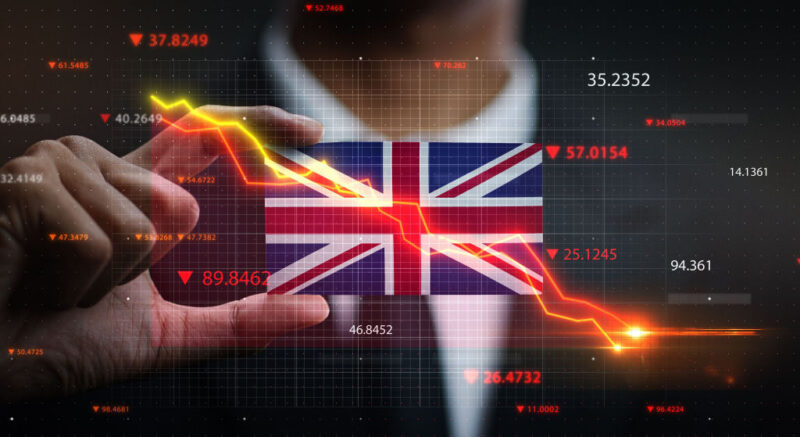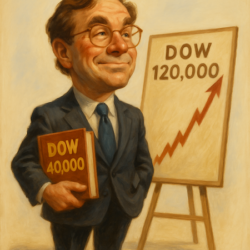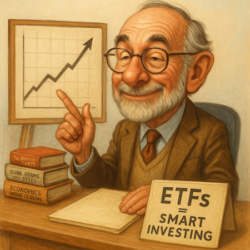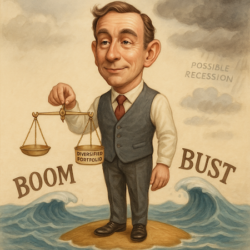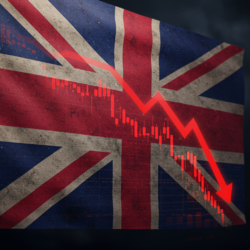There’s a certain look-down-the-nose attitude among the mainstream media towards President Donald Trump.
They like to think that because they have a degree in journalism, they know exactly how politics works.
But it’s more than that. What really gets the goat of the mainstream press is that Donald Trump’s election to president (again) has undone the years of effort those journalists put into building their networks.
They spent years building their ‘speed-dial’ list of contacts within Washington DC. They spent years cultivating the merry-go-round of DC insiders who would be in line for top jobs when their party won the presidency again.
That’s important. If you’re a journalist with inside info, you’re in with a good chance of getting the latest scuttlebutt.
But look what happens when Donald Trump got elected. Pretty much no journalist had cultivated a relationship with him – except perhaps one or two at Fox News. But even then, remember that Fox News wasn’t pro-Trump until very late in the 2016 campaign.
And so, because he’s an interloper, few journalists have any idea about how to interpret his actions. The same mainstream journalists who decry his policies and claim they are anti-democratic, forget that President Trump told voters he would do all these things.
As far as we can tell, there hasn’t been a single Executive Order or policy pronouncement that he didn’t foreshadow leading up to election day last November.
It’s for these reasons… the lack of insight and inside knowledge, that the mainstream has no idea what to make of President Trump’s actions, especially when it comes to the tariffs.
In their mind, they’ve convinced themselves that Trump is just making it all up on a whim. That he has no plan. That he imposes tariffs one day and withdraws them the next… then imposes them a week or two later… and then backs down again a few days after that.
The reality – in our view – is that the seemingly erratic behaviour is all part of his bargaining strategy. Ultimately, he wants America and himself to end up in a winning position – whatever that may be.
But that doesn’t mean he wants to crush every other nation into non-existence. Even China. Sure, China appears to be getting harsher treatment than any other country. But that’s also because President Trump knows China needs America more than America needs China.
Remember, it wasn’t so long ago – we’re talking the 1970s and 1980s – that China and Taiwan were known for cheap, shoddy, and short-lasting (and mostly plastic) consumer goods.
Pretty much until then, when people bought goods, they expected them to last. When they bought a fridge, washing machine, or vacuum cleaner, it was expected to last for 15-20 years… probably longer.
But with China’s cheap labour and cheap materials, what were previously considered ‘durable goods’, became commoditised near-disposable goods.
You don’t think most folks would be fine eschewing such products in favour of durable goods again? Maybe China corners that market too. Maybe. Or maybe with 145% tariffs, those goods become manufactured back in America again.
Maybe America will lose its taste for near-disposable goods. Where would that leave China?
China’s wealth over the past 30 years hasn’t come from innovation or aspiration among the population. It hasn’t come from wanting to better themselves. It has come from the consumer spending by the West.
If China no longer has that revenue stream, especially from America, how will it replace it?
This is why President Trump is pushing China so hard. The West can survive without China’s place in the supply chain. Yes, perhaps an alternative will initially result in higher prices.
But if there’s one thing the West, and particularly America has shown over the past century-and-a-half is the ability to innovate and drive down costs – especially in the tech sector.
So, will there be short-term pain with tariffs? No doubt. But could this be the moment where the West regains economic power and reinvigorates domestic industries? There’s a big chance… providing President Trump and Republicans in Congress hold their nerve.
Links to last week’s essays below.
Hope you’re having a great weekend.
Cheers,

Kris Sayce
Publisher, Southbank Investment Research
What you missed this week…
A US recession has begun
When the dotcom bubble burst, I lost everything. I could have given up. But instead, I decided to learn. Here’s what I did, step by step to escape the stock market carnage and find a different path. Read more here…
Begun, the trade wars have
The world has almost ended more times than we care to admit—and next time, it might not be a human who saves us. Read more here…
Blossom Possum was hit on the head by Trump tariffs
Is the sky falling? Of course, that does come with a slight caveat, and that is the fact the markets can remain irrational longer than most people can remain solvent. That means you do need a good strategy, smart risk management, understanding of your own true risk tolerance and astute capital management. Read more here…
What I Learned By Losing Everything — Twice
Southbank Investment Research invited me to share the same strategies I’ve been giving my U.S. readers—on how to navigate and thrive in today’s chaotic markets. And that’s something I don’t take lightly—because I’ve lived through chaos myself. I’ve suffered two major financial setbacks in my life… And I’m determined to pass on the lessons I learned from them — giving you the tools you need to achieve lasting peace of mind. Read more here…
The Asymmetric Gold Trade
Gold has reached a new all-time high, surpassing $3,100 per ounce. I anticipate it could climb even higher in the near future. It’s interesting to see the dollar strong and the dollar price of gold strong at the same time. Normally a strong dollar means a lower dollar price for gold. You get more gold for your dollar. That’s not happening. Read more here…
